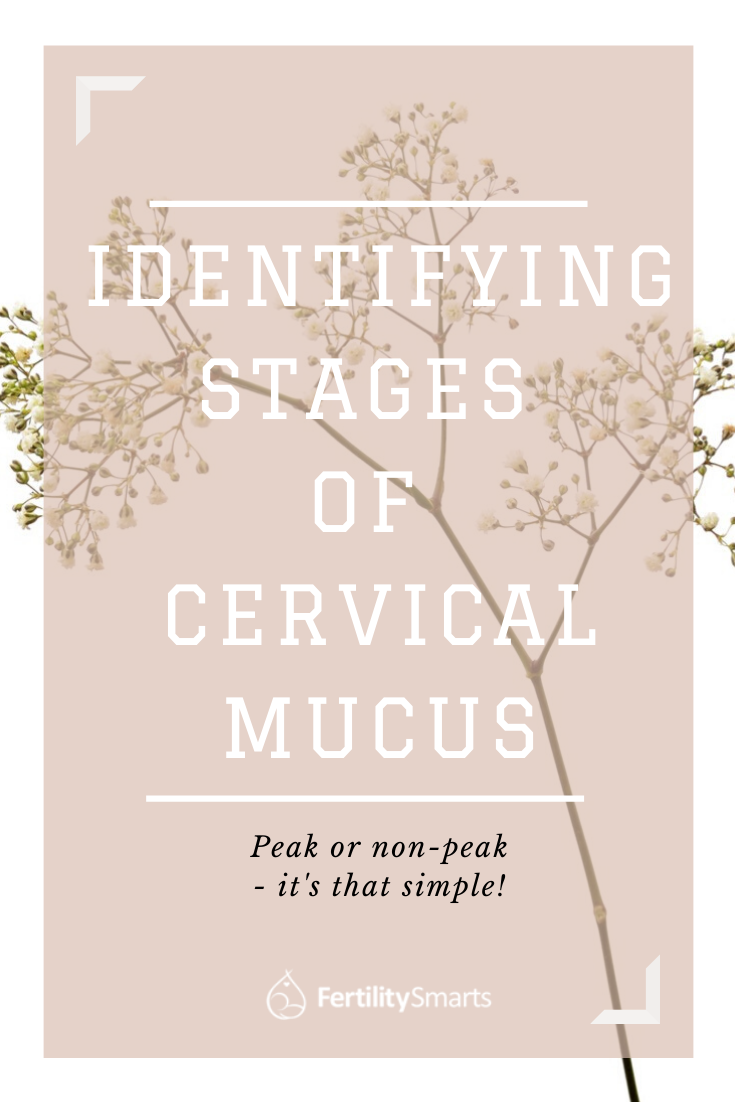If you have done a little research on getting pregnant, you've probably come across references to cervical mucus, but you may be wondering why it matters and how to identify it.
Many people are shocked to discover that the vagina is inhospitable to sperm in its natural state. The body alters the pH of the vagina in the days leading up to ovulation to support sperm survival and transport. It does this by creating fertile cervical mucus at the opening to the uterus. This means that identifying this fertile mucus is critical for the correct timing of intercourse or insemination.
In a healthy menstrual cycle, there is a gradual progression of changes in discharge and cervical mucus that determine when a woman is potentially fertile or not. It may take a little practice, but you can learn to identify your own stages of cervical mucus.
To confidently identify optimal times for conception, it is important to understand the role of cervical mucus, the various types of mucus you may experience, and what they mean for your fertility.
What is Cervical Mucus?
Cervical fluid, more often referred to as cervical mucus to differentiate it from the other types of fluids secreted through the vagina, is a hydrogel composed of water, mucus molecules, and biochemical compounds. The mucus is created in "crypts," which are tunnel-like channels within the cervical canal. Cervical mucus production is stimulated by the rise and fall of estrogen and progesterone secreted by the ovaries during the menstrual cycle.
An ideal way to identify different types of cervical mucus is to separate them into two categories:
- Somewhat fertile or non-peak mucus.
- Peak mucus that is considered most fertile.
What Makes Cervical Mucus Fertile?
The reason cervical mucus is so crucial to fertility is that it changes the pH balance of the vagina from its natural acidic state to be more alkaline (basic), which is a necessary condition for sperm survival. In the presence of cervical mucus, sperm can live up to five days.
Cervical mucus provides a fluid through which sperm can swim to get into the uterus. Certain types of cervical mucus are responsible for trapping mutant sperm to prevent them from creating a non-viable pregnancy.
Cervical mucus also supports a process called capacitation, an enzymatic process that matures sperm and makes it possible for the acrosome reaction to occur, which is necessary for conception.

What Does Fertile Cervical Mucus Look Like?
The most fertile mucus is associated with a lubricative or slippery sensation at the vulva, is clear, and has "spinnbarkeit" properties, meaning it can stretch like egg white. Assessing these qualities can be done as follows:
Sensation
Using toilet paper folded flat, wipe from the front of your vulva (near the clitoris) to the back of your perineum (the area between your vulva and your anus). Notice the sensation on the perineum as you do this wipe. Is it dry? Or does it feel slippery?
Color
Next, look at the tissue to observe for the presence or absence of mucus. If there is something there, try picking it up between your fingers to observe color and stretchiness. Generally speaking, the more clear and stretchy it is (like egg white), the more fertile it is.
Consistency
All cervical mucus that can be finger-tested (when you can pick up mucus from the toilet paper or underwear and stretch it between your thumb and forefinger) is potentially fertile.
This means that if cervical mucus has any one of the following qualities, it should be considered peak mucus (most fertile):
- All mucus that is clear is peak.
- All mucus that stretches more than an inch is peak.
- All mucus that feels lubricative is peak.
If cervical mucus has none of these qualities, it is considered non-peak.
|
Infertile
(No Mucus) |
Somewhat Fertile
(Non-Peak Mucus) |
Most Fertile
(Peak Mucus) |
| Color |
None |
White, Cloudy |
Clear |
| Consistency |
No Stretch |
Stretchable to less than 1 inch, sticky, pasty, gummy, or tacky |
Stretches more than 1 inch, or is watery |
| Sensation |
Dry |
Smooth |
Lubricative |

Cervical Mucus and Ovulation
The last day that an individual produces peak mucus has been shown in research to be highly correlated with the day of ovulation. Ovulation may occur up to +2 or -2 days from this peak day. Three to seven days of peak mucus is considered normal.
Since sperm can live up to five days in the presence of peak mucus, intercourse and insemination do not have to be timed for peak day (and usually can't, since it is retroactively identified as the last day of peak mucus) but should be timed to coincide with alternate days throughout the time of fertile mucus, as well as the first day that peak mucus either dries up or turns into non-peak mucus (mucus not clear, stretchy (1" +) or lubricative).
Stages of Cervical Mucus
Individuals vary greatly in their pattern of cervical mucus production, both in quantity and quality. In general, menstruation should be followed by 3-7 days of no mucus.
This should be followed by either immediate observations of peak-type mucus (clear or lubricative or stretching more than an inch) or by observing white, sticky or pasty mucus for a day or two before the onset of peak-type mucus.
Peak-type mucus should be observed at least once a day for at least three days in a row and up to seven days.
Following peak day and the confirmation of ovulation, the mucus should dry up within three days. There should be no discernible mucus at the vulva until just before menstruation.
| Cycle Phase |
Observation |
Typical Cycle |
Normal Cycle
Phase Length |
| Menstruation |
Bleeding |
Cycle Days 1-5 |
1-7 Days |
| Pre-Ovulation (Infertile) |
Dry (No mucus) |
Cycle Days 6-9 |
2-13 Days |
| Pre-Ovulation (Fertile) |
Mucus |
Cycle Days 10-14 |
3-7 Days |
| Ovulation |
Last Day of
Peak Mucus |
Cycle Day 14 |
24 Hours |
| Post-Ovulation |
Dry (No mucus) |
Cycle Days 15-28 |
12-14 Days |
How Much Mucus Is Normal?
It is normal to have anywhere from three to seven days of "peak" mucus—that is, mucus that is either clear, stretchy (will stretch between your fingers at least an inch), or has a lubricative sensation. However, you may only notice mucus once a day, so it is important to check throughout the day (whenever you go to the washroom), so you don't miss it.
How to Time Intercourse or Insemination
Time intercourse for days with the highest quality mucus, alternating days to allow for sperm to regenerate. Don't be concerned if this does not correlate with a positive result on your ovulation predictor kit (OPK). It is normal for the ovulation hormone surge to occur a day or two after mucus has dried up. This is fine since sperm can live up to five days in the presence of healthy cervical mucus.
How to Keep Track of Your Cervical Mucus
To determine your most fertile days, it can be helpful to track your cervical mucus. You can use paper charts, or you can chart online using apps that are designed specifically for charting primary fertility signs.
